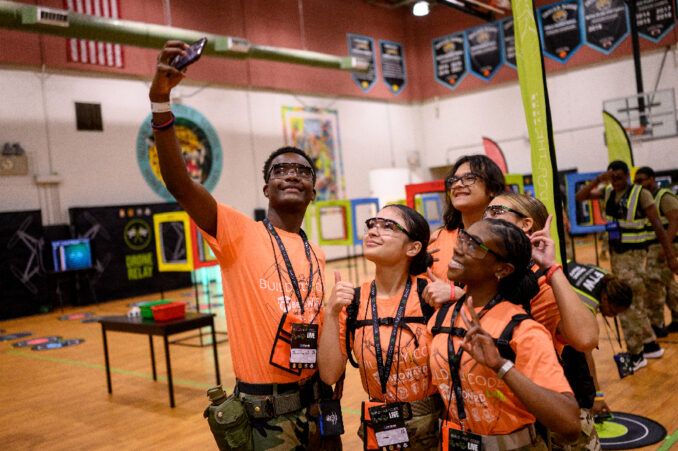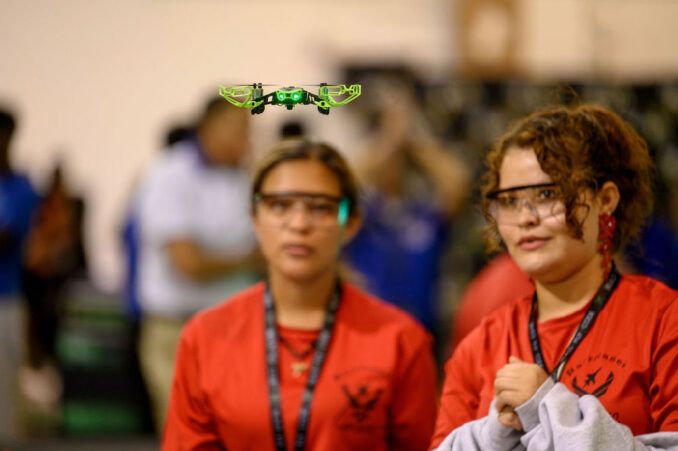
Rob Harvey is a brand builder with more than 20 years of experience elevating unique voices and guiding industry leaders to new technologies. His ability to identify gaps in the market led him to pivot to education, where he recognized a need for better STEM and computer science-based education technology. As executive chairman and cofounder of For The Win Robotics, he pioneered the Build | Fly | Code program and released a first-of-its-kind curriculum to schools across the United States.
Tell us about your company and the problem it solves:
Traditional STEM education often relies on abstract concepts and outdated tools, leaving students disconnected from real-world applications. Even when technology is incorporated, learners are frequently siloed on individual screens, preventing the kind of genuine collaboration and problem-solving it should enable. At For The Win Robotics, we’re shifting this paradigm with our Build Fly Code® platform, a hands-on approach that empowers students to directly engage with cutting-edge technology through building, flying, and coding with the Hopper® drone.
Through our immersive learning ecosystem, students start by assembling the classroom-optimized Hopper drone and advance through an evolving curriculum that incorporates coding, flight operations, and real-world problem-solving. From writing flight path algorithms to exploring autonomous systems, students discover how drone technology is revolutionizing industries like sustainable agriculture, urban planning, and emergency response. Our curriculum, rooted in Career Technical Education (CTE) pathways, connects classroom learning with real-world industry applications, making technical skills both engaging and accessible.
Beyond technical proficiency, our platform fosters essential professional and soft skills such as teamwork, effective communication, and creative problem-solving. By combining advanced technology with real-world relevance, we’re equipping students with the tools and mindset needed for success in an innovation-driven world.
What is the challenge educators face today that is fixable?

Today’s students live in a world saturated with advanced technology, yet classrooms often fail to reflect this reality. This disconnect can lead to disengagement—not because students lack interest in learning, but because traditional methods don’t align with the dynamic, tech-rich environment they’re accustomed to.
The solution lies in reimagining classrooms as hubs of experimentation and discovery. When educators provide tools that allow students to create, test, fail, and succeed, they tap into students’ natural curiosity and excitement. Across the country, educators tell us that students who once appeared disengaged come alive when given the opportunity to work with technology in hands-on, meaningful ways.
What makes this approach to bridging the engagement gap particularly effective is its inclusivity. By introducing adaptable tools that cater to various learning styles and skill levels, we create multiple pathways for engagement. This transforms STEM education from an abstract discipline into a personal journey of discovery, ensuring every student can find their unique connection to the subject.
What is the challenge educators face today that will persist?
The rapid pace of technological innovation presents a unique challenge: preparing students for careers that don’t yet exist, using tools that may be outdated by the time they graduate. Upon graduation, many students remain unaware of opportunities in emerging fields that are poised to shape the future like automated logistics, precision agriculture, and advanced robotics, because there was no mirror for those fields in their classroom.
While we can’t predict every future job, we can instill adaptability, critical thinking, and problem-solving skills—capabilities that will serve students well in an ever-changing technological landscape. Our goal is to equip them with both career-ready skills and the flexibility to thrive in an evolving workforce.
What areas of education or workforce development are being overlooked?

STEM equity remains a critical, yet often neglected, aspect of workforce development. As technology reshapes industries, it’s vital to ensure all students—regardless of background, socioeconomic status, or location—have the opportunity to succeed in STEM.
Traditional STEM approaches often reinforce barriers for underrepresented groups. Addressing this requires more than simply bridging access gaps—it involves creating environments where all students feel empowered to explore, experiment, and lead. This shift ensures that those from underrepresented backgrounds gain the support, agency, and opportunities needed to fully realize their potential.
Beyond addressing disparities, this approach helps build the diverse, innovative workforce needed to solve the global challenges of the future. Equitable access to STEM education and career pathways opens the door to a talent pool prepared to address the growing labor shortages in technology-driven industries such as construction and logistics. More importantly, when people from diverse backgrounds enter STEM fields, they bring fresh perspectives to stubborn challenges and can transform how we tackle long-standing issues.
What challenges do you foresee in education in the next three to five years?
As the pace of technological advancement accelerates, traditional models for adopting and integrating educational technology are falling behind. While industries rapidly innovate, schools often remain constrained by slow procurement cycles and outdated refresh schedules. This growing disparity risks leaving students unprepared for the world they’ll face post-graduation.
To address this, schools must embrace continuous evolution. This requires a shift in budgeting, curriculum design, and professional development to create dynamic, adaptable learning environments. The most successful schools will operate as living laboratories, where students engage with emerging technologies in real-time, keeping pace with industry advancements and preparing for a future defined by innovation.


